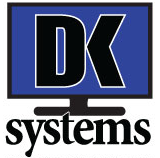IT Compliance
What is IT Compliance?
IT compliance refers to the process of ensuring that an organization’s information technology systems, policies, and procedures adhere to relevant laws, regulations, and industry standards. It is essential for protecting sensitive data, maintaining operational integrity, and avoiding legal and financial repercussions.
Why is IT Compliance Important?
Compliance is critical for organizations to:
- Ensure Data Security – Protect sensitive information from cyber threats and breaches.
- Meet Legal and Regulatory Requirements – Avoid penalties and maintain credibility by adhering to mandatory regulations.
- Enhance Customer Trust – Demonstrate a commitment to data protection and privacy.
- Improve Operational Efficiency – Establish clear policies and procedures to streamline IT management.
- Mitigate Financial Risks – Reduce potential fines and costs associated with non-compliance.
Common IT Compliance Standards and Frameworks
Organizations may be required to comply with various IT security and privacy regulations, including:
- National Institute of Standards and Technology (NIST) Frameworks – Offers cybersecurity guidance for federal and private organizations.
- NIST 800-171 – The frame work to obtaining Cybersecurity Maturity Model Certification (CMMC).
- Health Insurance Portability and Accountability Act (HIPAA) – Protects health information in the U.S.
- Payment Card Industry Data Security Standard (PCI DSS) – Secures payment card transactions.
- Sarbanes-Oxley Act (SOX) – Ensures financial and IT security for publicly traded companies.
- ISO/IEC 27001 – Provides an international standard for information security management systems.
Steps to Achieve IT Compliance
Organizations can follow these steps to establish and maintain IT compliance:
- Identify Applicable Regulations – Determine the laws and standards relevant to your industry and region.
- Conduct a Risk Assessment – Evaluate potential security threats and compliance gaps.
- Develop and Implement Policies – Establish IT security policies, procedures, and best practices.
- Train Employees – Educate staff on compliance requirements and security protocols.
- Monitor and Audit Compliance – Perform regular assessments to ensure adherence to regulations.
- Maintain Documentation – Keep records of compliance efforts, security measures, and audits.
Overcoming IT Compliance Challenges
Compliance can be complex due to evolving regulations, technological advancements, and cybersecurity threats. Organizations should adopt proactive strategies such as:
- Automation Tools – Use compliance management software to streamline processes.
- Third-Party Audits – Conduct independent assessments for objective evaluations.
- Continuous Monitoring – Implement real-time security monitoring and incident response.
- Expert Guidance – Work with IT compliance professionals to navigate regulatory landscapes.
Get Help with IT Compliance
Navigating IT compliance can be daunting, but our team of experts is here to assist. We provide tailored solutions to help your organization achieve and maintain compliance with confidence.
Contact us today 414-764-4465 or email info@dk-systems.com to learn more about how we can support your IT compliance journey.
